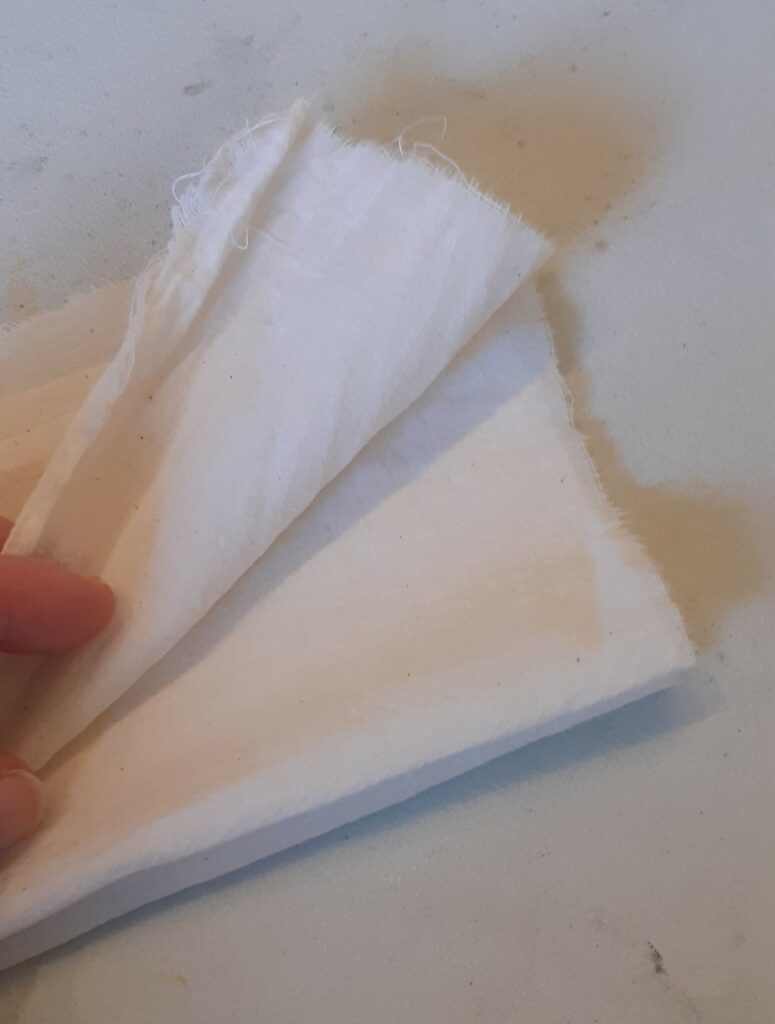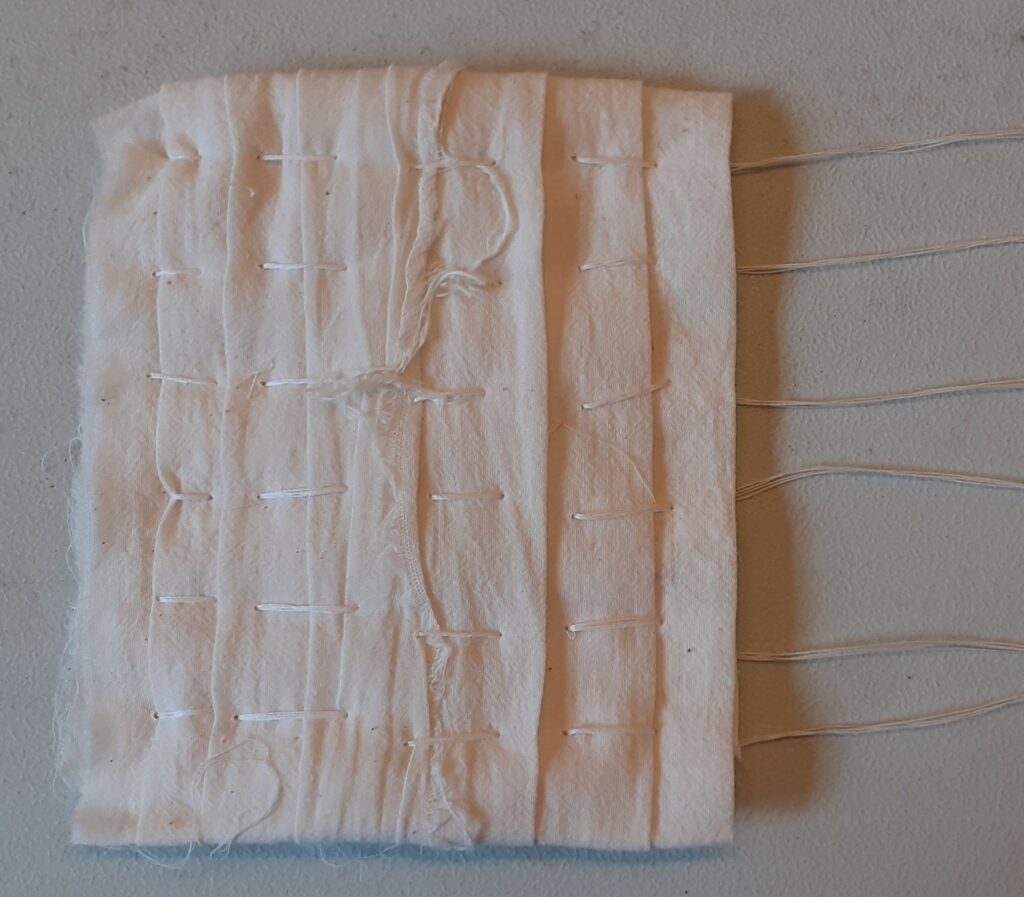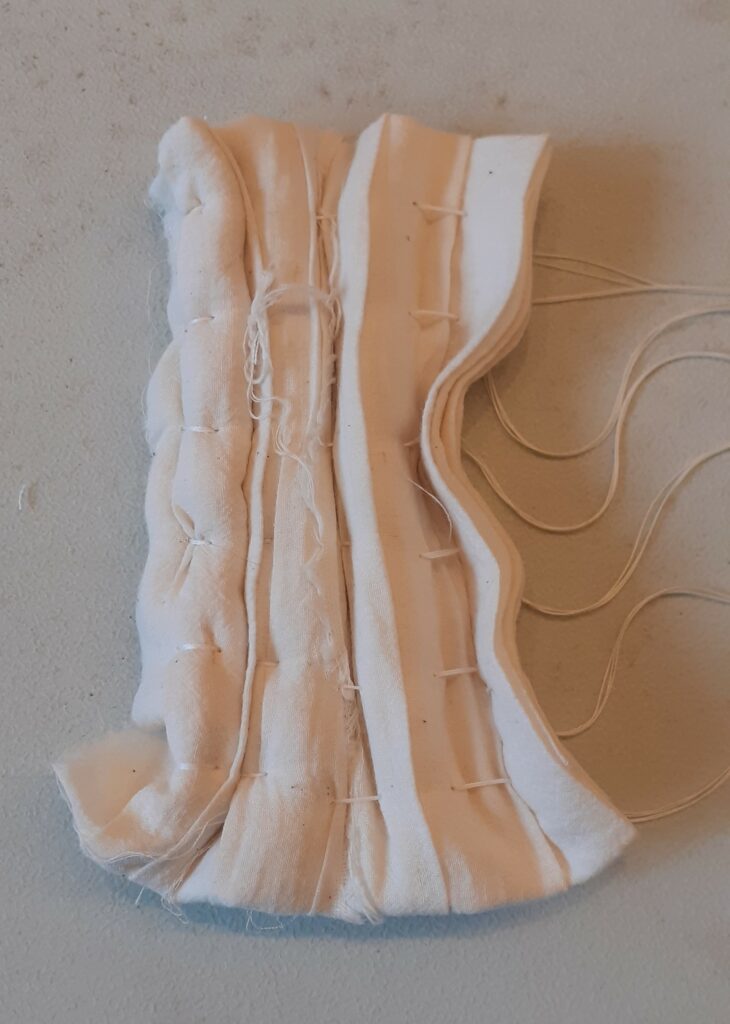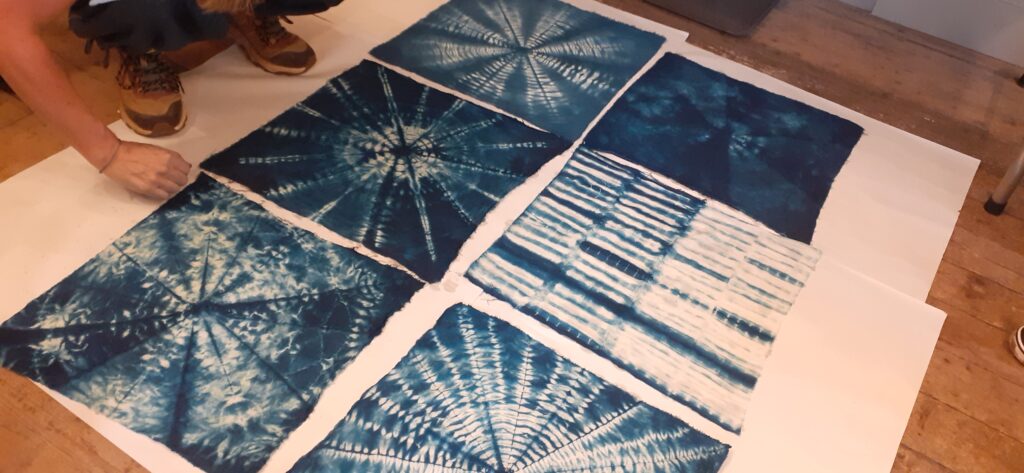I joined the British Textile Biennial ‘Slow stitch and indigo shibori workshop with Justine Aldersey-Williams‘ held at the Pendle Heritage Centre. Justine introduced us to indigo as a dye, which fibres you can dye with natural dyes (showing a video of her impressive swatch book!), and she talked about the impact of chemical dyes and some of the effects of textile/garment production on developing countries.
Indigo is a natural dye extracted from the leaves of plants of the Indigofera genus. It is commonly used to dye cotton to use in the garment industry, for instance to create blue jeans.
The natural dye can be used in a 1-2-3 formulation using 1 part dye, 2 parts builder’s lime, and 3 parts fructose. The ingredients are individually dissolved in warm water and then combined and left to sit for a while. Justine had prepared a vat for us to use during the course, so no need for an overnight stay! (For instructions on using this dye, check out this website. If you want to learn about the chemistry of the dye, check out this student resource.)
We each used a square of cotton and were instructed on how to fold it to create eight radial segments according to the shibori technique, a Japanese method for tie-dyeing by hand. I went a little off-piste as I wanted to try to come up with my own motif.
I folded my square several times into an accordion made up of increasingly narrow segments:

I used an iron to press the folds:

I then folded this over several times to create a small ‘parcel’ and used an iron to press:

I then experimented with using a basting stitch which I would later pull tight to gather the fabric:



I then attached my fabric ‘parcel’ to a thin rope attached to a clothes peg. I submersed my parcel in water and squeezed to ensure the whole parcel was wet, and then squeezed excess water out. You then have to carefully lower the parcel into the indigo vat and carefully squeeze your parcel whilst it is submerged to get the dye into/around your parcel. The clothes peg is used to hold the parcel into place inside the vat to prevent the parcel from sinking to the bottom (where some sediment will be present). No photos of this process I’m afraid as I was wearing gloves.
After around 10 minutes of wait time we each carefully removed our own parcel ensuring to squeeze out excess dye as we lifted the parcel from the solution. The excess dye is washed away by repeatedly squeezing your parcel in clean water, and we then rinsed the parcel underneath clean water to fully wash away all dye.
Now it was time for the big reveal by cutting the tied threads. Can you guess which one is mine?

You can then place your fabric between chip-shop paper and an iron to fully dry the fabric.
I think everyone who took part made something beautiful! All but myself used the same shape/technique but every cloth is different! I think they all turned out really beautifully and am regretting a little bit that I chose to do my own thing! I do like how half of mine turned out (the left half) but the right half is quite ‘boring’ as this must’ve been the inside where not much dye got in. I was surprised by this, as I felt my parcel wasn’t super tight. But it must have still been tight enough to exclude dye from the center, or perhaps I should have squeezed more whilst he parcel was in the dye.
I will use my piece to create some applique, so stay tuned for that.
Justine also spoke about the Northern England Fibreshed, a bioregional textile system across counties in the North. The aim is to create regenerative fashion and textiles, textiles grown and made regionally that can eventually go back into the land by being composted.
A fun fact Justine shared is that purple dye used to be extracted by ‘milking’ snails! Thousands were needed to obtain a small amount of the dye (called Tyrian purple).
This was a fantastic workshop to get introduced to the art of shibori and using natural indigo dye. I purchased a kit Justine had brought with her so I can now use this technique at home. I have some partially-used old bedsheets that must be cotton, so I can have a go and try some different tying techniques. I also got two bunches of indigo seeds so I can try to grow my own plants (I will give the second bunch to my mother who is an avid wool spinner, knitter, and crocheter; she uses natural dyes for her wool!).